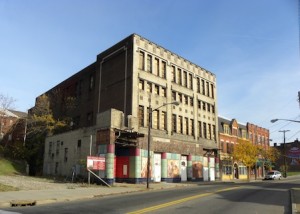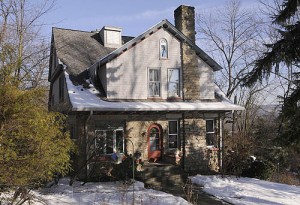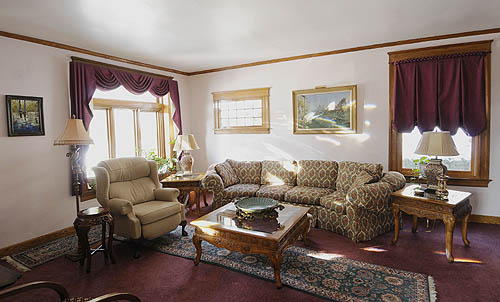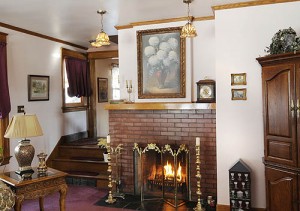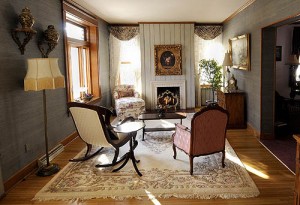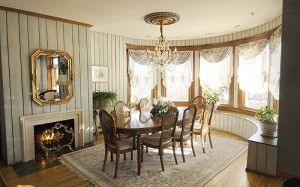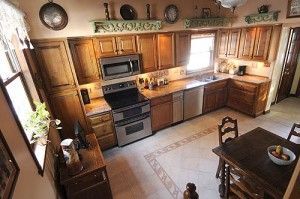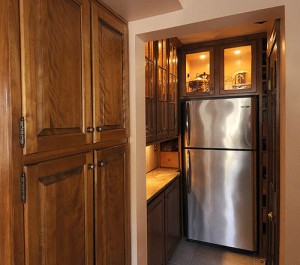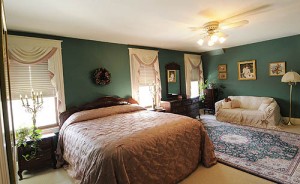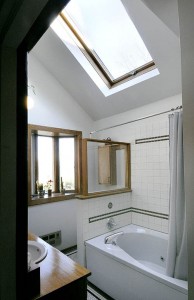
Category Archive: National Historic Landmarks
-
Fairview Park in Delmont Gains National Historic Status
Thursday, February 24, 2011By Laurie BaileyFairview Park in Delmont Gains National Historic Status
It’s important for retired history teacher Barbara Calloway that her children and grandchildren realize the impact of Salem Township’s Fairview Park on her own family and a generation of area African-Americans.
“They really can’t imagine the whole segregation thing. It’s part of our integrity, our history and part of who we are,” she said.
The park was selected earlier this month to be on the National Register of Historic Places. It was developed in 1945 by the Monongahela Valley Sunday School Association — a group of African-American churches from Westmoreland and Allegheny counties. At a time when segregation restricted access to other public amusement parks, Fairview Park was a place the African-American community could call its own.
“The designation is a recognition of what the people who founded the land had to go through,” Fairview Park Association president Ernest Jackson said.
The idea for a safe, welcoming place for African-American families, many from urban communities, to have fun and fellowship was actually conceived in 1918, Mr. Jackson said.
“No banks were lending money for land to black folks at that time,” he said. A banker himself, Mr. Jackson is vice president of operations for Dollar Bank.
People put up their own cash, even mortgaged their homes to develop the 100 acres of land where a roadside gas station and restaurant once stood along Route 22. “It wasn’t an easy transaction,” Mr. Jackson said.
By the 1940s and 1950s, the park established itself as the first African-American-owned amusement park and the place to go for church picnics and other gatherings. In its heyday, it featured a roller coaster and merry-go-round for small children, a swimming pool, softball fields, playground equipment, petting zoo and even hot air balloon rides.
“We took our picnic baskets and visited. The church picnic was the highlight of the year,” said Mrs. Calloway, of Point Breeze. Most churches had buses to transport those without cars to the Westmoreland County park.
“If you trace the history of the Civil Rights movement, you could determine when the park was most popular,” Mr. Jackson said.
Attendance started to decline in the late 1960s with the Civil Rights movement.
As money was needed throughout the park’s history, parts of the land were sold, including 33 plots that created the first black community in Salem Township. Part of the land was sold to pay real estate taxes — a cost that should have never occurred, Mr. Jackson said. Because the proper paperwork had not been filed, tax-exempt, non-profit status wasn’t official until 1998.
Now the association’s goal is to develop the park, which is still functional and used by a variety of groups. Costs for maintaining the existing 52 acres come entirely from donations, mainly from the dozen or so churches actively involved in the association. Volunteers cut the grass and do repair work.
But significant funding is required to meet the park association’s short term plans for updating the existing three shelters and bathroom facilities, playground equipment and ball field. The group is hoping to find someone to offer expertise in grant writing, Mr. Jackson said.
Along with its new national historical status, the park is eligible for consideration in federally assisted projects and qualifies for federal grants for historical preservation when funds are available, according to the website for the National Register of Historic Places: www.nps.gov/nr.
The association has a dream of further developing the park into a retreat center, providing facilities for church groups and businesses.
“With over 50 acres of land, there are many things we could do,” Mr. Jackson said.
But for now, as in the early days, church picnics successfully prevail, introducing today’s children to old-fashioned traditions like sack races, baking contests and bingo.
“They are things that kids don’t do now, but once they catch on, it gets competitive,” Mr. Jackson said.
-
Fairview Park Gets Historical Status
By Richard Robbins
TRIBUNE-REVIEW
Wednesday, February 16, 2011Fairview Park Gets Historical Status
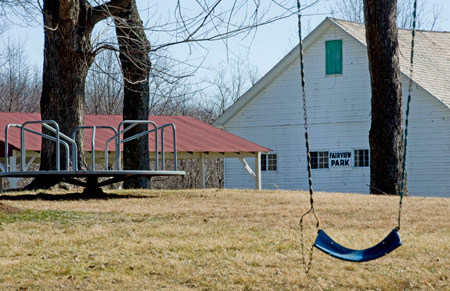
Once home to amusement rides and a swimming pool, Fairview Park today consists of aging swings sets and slides, a basketball court, a ball field and several picnic pavilions. Barry Reeger | Tribune-Review
A Westmoreland County park with roots deep in African-American history has been listed on the National Register of Historic Places and named a historic landmark by the Pennsylvania Historical and Museum Commission.
Fairview Park in Salem Township, near Delmont, was created in 1945 in response to mostly or exclusively whites-only amusement parks throughout Western Pennsylvania.
The segregationist era began to crumble in the 1960s, and the amusement rides and other attractions at the park eventually were dismantled. Today, Fairview Park consists of aging swings sets and slides, a basketball court, a ball field and several picnic pavilions.
Ernest Jackson, president of the Fairview Park Association, said the state and federal designations were intended foremost to “honor the memory” of the men and women who founded the park and of the wonderful times the park made possible.
Originally organized by a coalition of black churches in Pittsburgh, Fairview Park hosted large gatherings until sometime in the 1970s, Jackson said.
The founders had “foresight and vision,” said Jackson, of the South Hills.
“Fairview Park enabled a lot of people, including a lot of young people, to get out of the inner city and spend time in the country,” he said.
He said photographs from the late 1970s show row after row of buses jammed with fun-seekers pulling up to the park entrance.
At the height of its popularity, the park featured a roller-coaster, merry-go-round, skating rink and swimming pool.
At 52 acres, today’s park is nearly half the size it once was. It is maintained by a small group of volunteers, Jackson said.
Each summer, the Fairview Park Association holds an annual Old-Fashioned Picnic at the park with a petting zoo and other amusements. The event is open to all, Jackson said.
The de facto segregation of blacks was a way of life in the northern United States during most of the 20th century. Blacks in Western Pennsylvania were routinely barred from public facilities such as movie theaters and swimming pools. All of this was in contrast to the Jim Crow segregation — mandated by state and local laws — practiced in the South.
Carol Lee, the state’s national register and survey coordinator, said Fairview Park is the only black amusement park in the state. “At least it’s the only one we know of,” she said.
That makes Fairview Park significant in the commission’s eyes, Lee said.
The state and federal actions recognizing the park were wrapped up in December, Lee said. The review process took about 18 months.
“Basically, it’s a matter of having bragging rights,” Lee said of the designation as a state and federal historical treasure.
There are no bars to private development of the property, she said. At one time, the park association was looking forward to the construction of a multimillion-dollar, assisted-care living facility on the property.
Jackson indicated that no project is planned, though he holds out hope the park’s enhanced status will stimulate interest in the park’s history and possibly development.
-
Water to Blame for Wall Collapse
Tuesday, February 15, 2011By Diana Nelson Jones, Pittsburgh Post-Gazette
Pittsburgh building inspectors examine the partial collapse of a brick wall at S&S Candy and Cigar Co. at South 21st and East Carson streets on the South Side Monday morning. Bob Donaldson/Post-Gazette
Bricks and mortar rained onto 21st Street Monday morning, the likely result of water damage to the side of the S&S Candy and Cigar Co. at 2025 E. Carson St. on the South Side.
No one was injured.
An almost identical incident occurred in the morning when bricks fell from the side of a dentist’s office in Washington, Pa., damaging four cars.
Bob Farrow, division chief of Pittsburgh’s EMS department, said the outer layer of bricks on the S&S building gave out, followed by a crashing down of older bricks and mortar behind it.
The owner was not available to discuss the damage, but acting Bureau of Building Inspection Chief John Jennings said he suspected that water got in behind the veneer of bricks and pushed them out.
“We have seen this before, where water seeps in behind the brick, freezes and pushes the bricks out,” he said.
A structural engineer will be called in, he said. “We need to shore up the floor joists because they are compromised, but the damage is just to this one side. This building can be saved.”
Police closed South 21st Street between East Carson and Sidney streets. The parking lane alongside the candy store was covered with rubble.
Dozens of bystanders stared as the outer layer that had not fallen hung peeled back like a rind.
The candy and tobacco store has been in business in Pittsburgh since 1965.
In Washington, the brick facade of the dentist’s office detached without warning onto a side street, crushing four cars in the building’s parking lot.
Strong winds are being blamed for the collapse, according to what building owner Thomas C. Drewitz heard from insurers.
Emergency workers cordoned off the two-story building in the 800 block of Jefferson Avenue after the 10:40 a.m. incident. The city issued an emergency demolition permit to remove any loose bricks that had not fallen.
“Everything started to rumble and shake,” Dr. Drewitz said. “It went down fast.”
Dr. Drewitz said the building was constructed around 1965.
Three cars were totaled and a fourth suffered heavy damage.
“They were flat,” fire Capt. Nick Blumer said of the vehicles.
Dr. Drewitz closed the office for the day but said he planned to reopen today.
-
Historic District Building’s Wall Collapses in South Side
By Margaret Harding
PITTSBURGH TRIBUNE-REVIEW
Tuesday, February 15, 2011Historic District Building’s Wall Collapses in South Side
Francine Mykich was preparing S&S Candy and Cigar Co. for its busiest day of the week when she thought she heard a truck hit the South Side store.
“We came in just like a normal Monday morning, and then all of a sudden ka-boom,” said Mykich, who has worked at the business on East Carson and South 21st streets for 26 years. “We came outside, and it’s been steadily crumbling.”
A wall of the building, which dates to 1892, collapsed onto 21st Street about 8:40 a.m. Rubble covered the sidewalk and part of the street. All the employees safely evacuated the building, and no one was injured.
“The time of day was very fortunate,” Mykich said. “We weren’t open yet, thank God.”
The collapse likely was caused by moisture freezing between layers of brick and breaking the bonds between them, said John Jennings, the city’s interim building inspection director. When the bricks thaw, there’s nothing left holding them together, he said.
The owner of the building, identified in property records as Richard Stephens, has to get an engineer to stabilize the building before clean-up begins, Jennings said. Bricks and pieces of the building continued to fall throughout the morning. Through employees, Stephens declined to comment.
It could take a day or more to stabilize the building, Jennings said.
The building is part of the East Carson Historic District. It first appeared as Armour & Company Wholesale Meats in 1892, said Frank Stroker, assistant archivist with Pittsburgh History & Landmarks Foundation.
“It was probably their main facility at that point,” Stroker said.
Armour held the location until 1952. The building then briefly became home of Freezer Foods Inc., Stroker said. By 1956, Brinn’s China and Glassware moved in, he said, and held the spot until S&S took over in 1965.
City officials would have to approve any demolition, alterations or repairs because of its location in the historic district, said John Martine, an architect and member of the local advisory committee to the city’s Historic Review Commission.
Martine said he’s always admired a canopy along the side of the building. The collapse destroyed the canopy.
“It was a very simple, but interesting canopy with wonderful wood brackets that went the length of the loading docks,” Martine said. “It’s a very working-type building. It’s not that fancy, but there’s enough detail there that it would be a loss to see the building go.”
-
Grant to Help Return Saxonburg Main Street to 1850s
Thursday, February 10, 2011By Karen Kane, Pittsburgh Post-GazetteSaxonburg’s Main Street program manager says he’s feeling “pretty blessed” by the news last month that the Pennsylvania Department of Transportation had come through with a $1.4 million grant.
The money was both needed and expected. But, Raymond Rush said he was happy it was all official.
“We’ve been blessed by PennDOT and beyond,” he said.
Design and engineering work is under way for reconstruction of both sides of Main Street — a four-block section of the street that spans about 2,200 feet from Butler Street to Rebecca Street. Those costs are being covered by a $373,027 grant awarded in May by the Department of Community and Economic Development.
Now, PennDOT has come through with a $1.4 million grant for construction of half of the project: from Pittsburgh Street west to Rebecca Street.
The work will involve reconstructing sidewalks and curbs, and installing landscaping. Street lights that replicate old-style German lights will be installed.
The first half of the project is to be under way in the second half of the year with finishing work in the first quarter of 2012, Mr. Rush said. Sometime early in 2012, he’s expecting to hear that PennDOT is coming through with the rest of the funding. The total project cost is estimated at $2.4 million. The second half of the project would start during the 2012 construction season. Mr. Rush predicted the job would be completed within a year’s time.
He credits receipt of the grants to a partnership between the borough and the John Roebling’s Historic Saxonburg Society Inc., a nonprofit group that sponsors the Main Street program. The society is named for the town’s founder who invented wire cable and is famous for bridge design. One of his most notable projects was the Brooklyn Bridge in New York.
Saxonburg’s Main Street is an official historic district on both state and national levels. There are 52 historic buildings in the four-block project area, including Mr. Roebling’s home. A native of Germany, he designed the borough.
Mr. Rush said the reconstruction project will maintain the borough’s historic look while modernizing the infrastructure.
“It will bring the 1850s look into modern society,” he said.
-
The New Granada Theater is Granted National Historic Register Status!
February 5, 2011
Congratulations to the Hill Community Development Corporation, the steward of the New Granada Theater historic preservation project. With the assistance of the Pittsburgh History and Landmarks Foundation, the New Granada Theater was granted National Historic Register Status by the National Parks Service on January 7, 2011!
Having been stabilized with the assistance of the State of Pennsylvania and The Heinz Endowments, we look forward to the long, fundraising road ahead to renovate this historic institution as a multi-use, sustainable facility that pays tribute to its former uses, including that of a theater, office space, skating rink and even a car show room!
-
Buying Here: Thornburg
Saturday, January 22, 2011By Gretchen McKay, Pittsburgh Post-GazetteBidding wars are not common in Pittsburgh. Every once in a while, though, multiple buyers will set their collective hearts on a house in a much-desired neighborhood. Linda Padget and her husband, John Miller, had to outbid eight others to buy the nearly century-old Craftsman-style house at 508 Yale Road in Thornburg that is currently for sale by owner for $389,900 (www.oldhouses.com, No. 5121).
The couple adored the big Victorian they’d spend years restoring in nearby Crafton, but not its location at a noisy intersection.
“We wanted peace and quiet,” recalls Ms. Padget, who paid $243,500 for the house in 1999. “This was out of the way, with virtually no traffic.”
Laid out in 1899 by two cousins who subdivided 250 acres of family farmland, Thornburg has curving, shaded streets named after Ivy League colleges and many large, Craftsman-style homes that appealed to turn-of-the-century Edwardian sensibilities. The Thornburg Land Co. advertised the new development in the Chartiers Valley Mirror as a “high-class residence district.” The borough, most likely modeled after New York’s blue-blood Tuxedo Park, also had one of the first private golf courses in Allegheny County (members cut the grass on Saturdays and played on Sundays) along with a community club and a community theater founded in 1937.
Just 10 minutes from Downtown, Thornburg has remained a family-centered town with a lively community spirit: Both the Thornburg Community Club and Village Players are still active; the golf course, which fell into private hands for a time, is now a conservation area with walking trails for residents.
A few of Thornburg’s homes are true mansions, including the Frank Thornburg House built in 1907 on Lehigh Road, which has 7,000 square feet of living space, seven bedrooms and 10 fireplaces. The Miller-Padget house, built in 1904, is more modest, with five bedrooms, three working fireplaces with original tile hearths and just under 4,000 square feet of space.
Located on a professionally landscaped lot in the historic district, the 21/2-story house is believed to be one of the borough’s original dozen or so houses. Its exterior is constructed of fieldstone and cedar shakes; there’s also a driveway leading to a two-car detached garage. While it has been updated with cosmetic changes, none of its six or seven owners over the past 100 years made the mistake of significantly modernizing its rooms or exterior.
“Everyone took very good care of it,” says Ms. Padget. “They kept the integrity intact.”
Original hardwood floors, brass hardware and leaded-glass transoms are among the period details that dress up the first floor, which includes a 15-by-19-foot family room. There’s also a 20-foot oak bay with a cushioned window seat in the 13-by-19-foot dining room, parts of which are wallpapered with pale blue silk grass cloth.
An adjoining 12-by-15-foot living room has mahogany paneling, with windows overlooking the side yard. At first, the couple wasn’t too keen on the light blue tint of the stain on the paneling (probably not original). But they feared the room would be too dark if they stripped it and stained it dark mahogany. The color ended up growing on them.
The recently updated eat-in kitchen features stainless-steel appliances, cherry cabinets and granite countertops; they also turned a closet into a butler’s pantry with glass-fronted cabinets, fridge and a wine rack. Accent tiles in the backsplash depict Italian scenes; the copper ceiling is faux.
The second floor holds a 14-by-29-foot master bedroom with a pair of walk-in closets and a window seat. The master bath, brightened by a skylight, has a whirlpool tub. The smaller of two additional bedrooms serves as a home office, and there’s also a newly remodeled main bath with a porcelain floor.
The attic has two more bedrooms — one with a wood floor and the other carpeted — and a 10-by-16-foot “bonus” room that’s currently used for storage.
The finished basement has a game room/den with wall-to-wall carpeting, a 9-by-14-foot cedar closet and a store room/shop with built-in shelving. A vintage quartersawn-oak Banta icebox is used by the current owners as a bar. Since it’s too massive to move, it comes with the house.
The fenced-in backyard is surrounded by mature trees that cloak the house in privacy in spring and summer. Year-round, there’s a fabulous view from the 14-by-33-foot deck off the kitchen, outfitted with a built-in gas grill, below-railing lighting and stereo with quadraphonic sound.
“At night, you can see the sparkling lights of Sheraden and Ingram,” says Ms. Padget, It is, she says, their favorite spot in the house. “We spend seven months of the year out here.”
No properties have changed hands on Yale Road in the past several years, but homes have sold on other streets in the neighborhood with prices ranging from $160,000 on Cornell Avenue to $347,5000 on Harvard.
To request a brochure on 508 Yale Road, call 412-921-0508 or e-mail padgetmiller@verizon.net.
-
Steelpan City
Pittsburgh City Paper
For the Week of 01.05.2011 / 01.12.2011
BY ANDREW MOORE
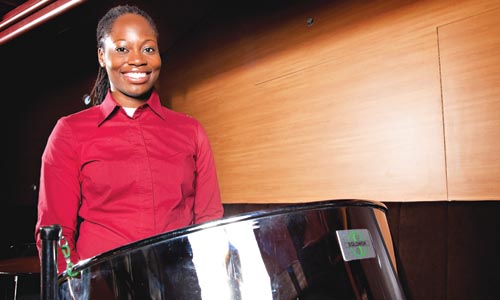
Jonnet Solomon-Nowlin - Steelpan Drum Instructor, owner of The National Opera House in Lincoln-Lemington - Brian Kaldorf
A local woman is hoping that the sounds of steelpan drums can revitalize one of the city’s most historic homes and the lives of young people.
The National Opera House, located on the border of Homewood and Lincoln-Lemington — and once the home of the National Negro Opera Company — has sat vacant for years. But now Jonnet Solomon-Nowlin, the building’s owner, believes her family’s U.S. Steelpan Academy can add value and structure to young lives, while bringing attention to the neighborhood’s often-overlooked past.
Steelpan drums were invented in the Caribbean — in countries like Guyana, and Trinidad and Tobago — during the 1930s. Steelpans were originally crafted from discarded 55-gallon oil drums. To achieve their signature pitched sound, two rubber-tipped mallets strike the surface of the pan, where notes have been marked onto the stretched steel surface.
Starting at the age of 14, Solomon-Nowlin’s father, Phil Solomon, founded several steelbands in Guyana; he was named Musician of the Year in 1971. After moving to Pittsburgh in 1984, he founded Solomon Steelpan Company and began manufacturing steel drums for organizations throughout the country. Solomon was the first manufacturer of steelpans in Pittsburgh.
After dedicating years to this instrument, Solomon wants the next generation to take over.
“The whole idea of the academy,” he says, “is to launch the steelpan into the 21st century, for me to pass this knowledge on to younger people.”
Solomon-Nowlin hopes not only to pass on that knowledge, but to teach young people a skill that can add value to their community.
“I would like to see steelpan and the arts and music help young people,” Solomon-Nowlin says, “by giving them an opportunity to express themselves through art.”
While she’s working to restore the Opera House, for the past several years Solomon-Nowlin has been able to teach lessons through community partnerships. And when she begins a new series of classes at the East End’s Union Project this month, it will be a step closer to running the academy within the National Opera House.
The Union Project lessons are important, she says, “and the first set of students will be a marketing piece for the house.”
Using the house as the home base for the Steelpan Academy makes sense. After all, the building has always had a role in the emerging African-American art scene, especially during the previous century.
The three-story Victorian home sits on a terrace overlooking Homewood. Built in the Queen Anne style in 1894, it was home to many prominent black Pittsburghers over the years, including Roberto Clemente, Lena Horne and Woogie Harris, brother of famed photographer Charles “Teenie” Harris.
But its most significant tenant was Mary Cardwell Dawson’s National Negro Opera Company. Launched in 1941, the NNOC was the first African-American opera company in the country. The NNOC held productions for 21 years and traveled to Washington, D.C., New York City and Chicago.
Solomon-Nowlin says she learned about this history through the advocacy efforts of the Young Preservationists Association of Pittsburgh (YPA) and the group’s executive director, Dan Holland.
The YPA is a preservation group that encourages young people to be involved in researching, documenting and eventually restoring historic places. Once a year, the organization releases a Top Ten list of the best opportunities for preservation in the region. In 2003, the Opera House was on that list.
“Their Top Ten list and the education around it, and why it’s important to preserve,” Solomon-Nowlin says, “is one of the key things that brought awareness to the project. They were able to reach a lot of people.”
And that’s what Solomon-Nowlin is hoping to do with Steelpan.
The Young Men and Women’s African Heritage Association, headquartered on Pittsburgh’s North Side, has been teaching steelpan for 15 years, and the Solomon family has been involved since the beginning. Lessons were first taught by Phil Solomon and later his daughters, Janera and then Jonnet. Jonnet gives lessons on Saturdays at the New Hazlett Theatre.
Janice Parks, executive director of the heritage association, says the steelpan is a good fit for her students.
“It’s an easily accessible instrument,” Parks says. “You don’t have to have years and years of experience to be great. [Students] can pick up two mallets and an hour later they can play the melody line of a tune that’s familiar to them.”
Adam Warble, an instructor at the academy, agrees, and says “it’s definitely a popular instrument — it’s fun.” Warble says that his young students get particularly excited when he mentions current hip-hop songs that feature steelpan. But Phil Solomon stresses the versatility of the instrument. “Steelpan was actually created to play classical music,” he says.
Parks says her students learn to play everything from “Bach and Beethoven to Stevie Wonder.”
When the academy begins teaching at the Opera House, Warble thinks it will be “absolutely wonderful. Especially since the steelpan was invented in the Caribbean” — where the culture is heavily influenced by the African diaspora. “[And] since [the home] was a hub of African-American cultures, I think it’s wonderful to bring that back to the Opera House.”
The next step is bringing back the house itself. Solomon-Nowlin has recently hired grant-writers to find funding for the home’s restoration. Architects, electricians and carpenters have all agreed to work with her, and some have already donated time to the project.
Now, she just needs to raise enough money to begin the restoration, and to begin turning the Opera House back into a home for music. But she’s quick to point out that because her forte is music, she can use all the help she can get on the restoration side of this dream.
“I’m not in the preservation business,” she says with a laugh, “I’m just in it by default. My key thing is to just make sure it’s preserved. We really have to push forward.”

